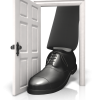
Recognise the DISC Styles Under Stress
Stress is your body’s response to any threat or fear. When you sense danger, whether it’s real or imagined, your body’s defences kick into gear in a rapid, automatic reaction known as the “fight-or-flight” or the “stress” response.
We have all felt stressed out at some point, and when extreme stress hits, we feel it in our bodies and its impact on our mind. We are unable to think or react clearly. Small amounts of stress can stimulate some of us, it causes us to kick into gear and get things done. Prolonged periods of stress are depleting, and we want to shut down and withdraw to our beds with a bowl of popcorn and Netflix.
The Extended DISC definition of stress tends to be “a reflection of a change in the environment and the adjustment process it causes” rather than anything to do with any medical or psychological illness. Examples of sources of stress might be short term pressures such as a conflict in the workplace or ongoing concerns at home. The source of pressure will depend on the DISC Style.
When an individual is experiencing significant stress or pressure, the Consultant or HR Manager may need to explore the reasons why this is happening to help relieve the source of stress.
By understanding the DISC system, individuals can anticipate or predict how someone will respond to a specific scenario. Let’s explore the causes and signs of stress in the DISC Styles and how to relieve these.
D Styles Under Stress
Causes of Stress
D Styles want to be in charge of their destiny, make their own decisions, and want to be in control. They may experience stress when control and independence are taken away from them.
- Inability to achieve goals
- Losing the decision making power
- Losing power of authority
- Not being able to influence what happens
- Losing position
Signs of Stress
D Styles operate from a position of control, which forms the basis for their stress reaction. D Styles will adopt the “too” effect. They become too aggressive, too assertive and can be very blunt. We have probably all worked with a high D Style under stress. They say hurtful comments they do not mean, to help release the tension.
- Pressures people
- Focuses on immediate results and action
- Becomes impatient and does things even if they are wrong
- Changes things hastily
- Becomes irritating, blunt, stubborn, inflexible and demanding
Stress Release
D Styles under pressure need to think before they act. A great strategy is to count to 10 before reacting. Often looking at the long term goals, rather than short terms achievements will help a D Style keep perspective on what they are trying to achieve.
- Give opportunity to act independently
- Let contribute
- Give responsibility
I Styles Under Stress
Causes of Stress
I Styles want to be liked and accepted. They love to socialise and often have large circles of friends. If their daily work tasks are isolating or repetitive, this usually bubbly team member will quickly wilt.
- Losing peoples’ attention
- Being neglected from events and activities
- Strict rules, inflexibility
- Silence
- Loss of influence or being side-lined
Signs of Stress
When I Styles are under pressure, they become over caring about relationships, seek popularity and overly emotional.
- Becomes overly concerned over relationships
- Talks a lot
- Seeks attention from everywhere
- Acting impulsively – heart over mind
- Has strong, emotional opinions that they defend critically and even rebelliously
Stress Release
To help I styles alleviate their stress, encourage their naturally upbeat and positive attitude. The I personality believes that life needs to be fun, lively and pleasant, so help them make it accordingly.
- Give the possibility to move, travel, meet people
- Do not force them to lose face
- Move closer to them
- Praise
- Provide encouragement
S Styles Under Stress
Causes of Stress
S Styles like structure and routines. Unexpected changes in an S Styles environment can put them under a significant amount of pressure.
- Sudden changes
- Insecurity
- Unstable environment
- Possible future problems
- Injustice
- Unstructured situations
Signs of Stress
When under pressure S Styles will try to avoid conflict and will go above and beyond to restore harmony to the environment. They will resist all forms of change and may become difficult to approach.
- Becomes overly cautious
- Wants to maintain the present ways of doing things and state of being
- Attacks aggressively to any attempt to change things
- Bases everything on justice and avoiding risks
- Becomes painful to approach and stubborn
Stress Release
To help ease the pressure, provide the S Style with the support they need to cope with change. Include them in the planning and each step, so they know what to expect.
- Create a predictable environment
- Involve in planning
- Create a familiar, cosy and safe environment
- Talk and explain a lot
- Show that you care
C Styles Under Stress
Causes of Stress
C Styles crave control. When they placed in a chaotic environment with unstructured situations and no clear instructions, they may be under a significant amount of pressure. C Styles stress out when in an environment with other stressed-out workers and too much going on. They will quickly become a hostile, frazzled mess.
- Lack of information
- Lack of clarity about their role and position
- Chaos
- Not being able to control what one is supposed to control
- Having to show weakness in emotions
Signs of Stress
When the C Styles are under pressure or stress, they become even more withdrawn and attentive. They extract themselves from the situation and seem to disappear.
- Questions everything
- Becomes overly considerate and interested in cause-effect relationships
- Trusts only in logic and facts, and doubts even them
- Withdraws oneself, becomes aloof
- Needing full explanation before acting
Stress Release
To help ease the pressure, provide the C Style with information to help make decisions and cope with change. Ensure they have enough instruction and support to complete their daily tasks.
- Give information
- Avoid public loss of face
- Make the instructions and rules as clear as possible
- Don’t push to decisions
- Provide information, feedback, clear instructions and roles.
Adaptability
All DISC profiles will find it debilitating if they are under stress or pressure for a significant amount of time. While some DISC Profiles will find stress invigorating, most need strategies to help them cope with stressful situations.
The big take away is to be more self-aware and understand what situations be stressful for you. As managers, it is also essential to identify the signs of stress for each DISC style, and this will help you manage the stress levels in your team.
Ultimately, we cannot control or modify other people’s behaviours. We can only change our self. DISC will help us be more mindful of how we interact with others and also of our stress levels.
SR Group uses the more advanced and powerful tool, Extended DISC to enhance personal and team performance. If you would like a sample report to see what sort of valuable information it uncovers or would like more information about implementing psychometric assessments into your workplace, please contact me directly.
With thanks to HR Profiling for the majority of the background information in this article.









No Comments
Sorry, the comment form is closed at this time.